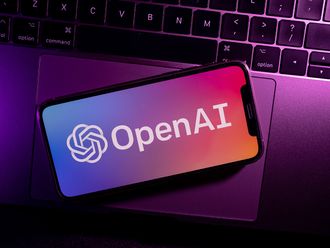At school, while studying History as a subject, we read about several revolutions and wars that took place across several civilisations and over the previous centuries.
Most of us would have never imagined being a part of an evolutionary revolution and a war that would change our lives forever, change the way we work, communicate, interact, how we build new relationships, how we maintain old relationships, how we bank & shop, apply for jobs and the list goes on. Social, mobility, analytics, cloud and internet of Things (IoT) have provided a platform for this evolution fuelled by the millennials. In the process generating huge quantum of data never imagined before. This revolution is about managing and making sense of the data, while the war is about winning, by monetising this data.
The previous four technology waves (mainframe, minicomputer, distributed PC and internet PC) lasted for about 10 years. Each wave or S Curve superseded the previous wave with more computing power, more devices and more data.
The fifth technology wave — The Digital Enterprise — has generated an unprecedented number of devices and data thereby paving the path for transformational technologies such as Artificial Intelligence and Robotics. While the data generated in each technology wave has been significant, the quantum of data from this fifth wave is expected to reach 35,000 Exabytes by 2020, if not more.
What is shocking is that 90 per cent of the data we have today has been generated over the last two years. And 80 per cent of this 90 per cent of data is unstructured.
The classical challenge most organisation have today is that their systems are designed to address structured data. While developing their traditional IT systems they never anticipated the need to address unstructured data as they were designed for the previous technology waves.
They were content providing structured reports from structured data, leaving the chaos of providing ad hoc management reports on a need basis. Any traditional IT Organisation has probably by now experienced the nightmare of dealing with Analytics from unstructured data.
So where is this unstructured data getting generated from? The sources are many, such as, the Social media, Mobile devices, Cloud Computing and all IP enabled devices (IoT) like sensors, ibeacons and robotics, etc. Today every click, search, comment, likes, tweet, post, etc leaves a digital trail. This is the unstructured data generated from Human to Machine (H2M) interactions over the last several years. Added to this, the internet of Things (IoT) has brought in a revolutionary dimension of generating data from Machine to Machine (M2M) interactions.
M2M is expected to fuel the next phase of data revolution because sensors, devices, etc that enable M2M are getting smaller, cheaper and more efficient. The networks required to capture and deliver the data generated by billions of devices are becoming ubiquitous.
With such phenomenal quantum of data being generated, some traditional organisations have chosen to ignore this data labelling it as “garbage data”, while other forward thinking organisations have chosen to embrace this data as an “Asset”. Companies like LinkedIn, Facebook, Amazon, Apple, Google, Uber, Air BnB, etc have created a strong stickiness with their customers that have enabled them to build a loyal community of customers across the globe. This stickiness is nothing but personalisation of services.
How did they create this stickiness effect? They made sense of the data generated by developing “sophisticated algorithms” to track their customer’s preferences across platforms. The data has to tell the customer’s journey and it has to infer the customer’s preferences, likes and dislikes. Over a period of time the algorithm gets intelligent enough to predict a customer’s preferences and expected future purchases. Organisations using these sophisticated algorithms can seamlessly provide a highly personalised service to their customers, thereby creating an unbeatable individualistic customer experience.
This war on data is different from any other war. This war is all about “collaborating” to win more than the anticipated gains, with minimum efforts. Collaboration is not just within industries but across other industries and markets as well.
When a diner searches for a restaurant using an App and confirms the reservation, it would ask the diner if she or he would like to Uber a Taxi. Once they confirm, Google Maps would provide all the additional information in terms of time to reach the final destination. By collaborating these organisations have monetised their data to provide a seamless experience to their customers. They are winning the war!
Successful organisations understand that to establish and grow a loyal customer community, they have to make sense of the data being generated and monetise their data under new “business and operating models”.
The writer is the Executive Vice-President of Dubai-based TransSys Solutions. He can be contacted via Twitter @Stephen_Fdes











